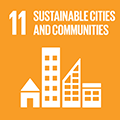Households and the Environment Survey, 2019
Archived Content
Information identified as archived is provided for reference, research or recordkeeping purposes. It is not subject to the Government of Canada Web Standards and has not been altered or updated since it was archived. Please "contact us" to request a format other than those available.
Released: 2021-10-19
Just over one in five Canadian households were environmentally engaged in 2019, with almost half doing so as part of a group. There has also been a gradual shift over the last decade, away from gas powered lawn and yard equipment to electric or battery operated equipment.
Environmental engagement
Being environmentally engaged can include many different activities, such as shoreline cleanups or migratory bird counts. Regardless of what they did, just over one in five (22%) Canadian households were environmentally engaged in 2019, with households in Prince Edward Island most likely to be engaged (32%) and those in Quebec the least likely (11%). Of the engaged households, 44% did so as part of a group, and 74% did so independently, with 22% of engaged households doing both.
Some households (7%) reported that a member of the household volunteered their time to teach about nature through activities such as chaperoning school trips or teaching about nature.
Households in large cities were less likely to be engaged (20%) than those that were in smaller cities and rural settings (25%). However, when households in large cities were engaged, they were more likely to have done so on behalf of a group or organization (46%) compared with households in smaller cities and rural settings (42%).
Lawn care and landscaping equipment
Lawn care and landscaping equipment such as lawn mowers, grass trimmers, leaf blowers, chain saws and snow blowers are used by many Canadian households.
Lawn mowers were the most frequently reported type of equipment, with 60% of households reporting using one in 2019. Households in Newfoundland and Labrador were most likely to have reported using one (81%), while those in British Columbia were least likely to have reported using one (49%). Just over half of households in large cities used lawn mowers (54%), compared with over three-quarters of households living in smaller cities and rural settings (77%).
The majority of those households using lawn mowers (78%) reported using gasoline-powered lawn mowers. Close to one in five (18%) reported using an electric or battery-powered lawn mower, while 7% of households used a manual mower to cut their grass.
Grass trimmers were another frequently reported type of lawn-care equipment, with almost half (48%) of households reporting using one in 2019. Households in Newfoundland and Labrador (70%) were most likely to have reported using one, while households in British Columbia (41%) were least likely to have reported using one. Grass trimmers were less likely to have been used by households in large cities (43%) compared with households in smaller cities and rural settings (64%).
Electric or battery-powered grass trimmers were the most frequently used type of trimmer, used by 59% of households that used a grass trimmer, while gasoline-powered trimmers were reported by 43% of households that used a trimmer.
Leaf blowers were used by just over one in five (21%) households in 2019. Households in Saskatchewan (29%) and Manitoba (27%) were most likely to report using one, while households in Atlantic Canada were least likely to report using one.
Among those households using a leaf blower, 69% reported using an electric or battery-powered one, while 32% reported using a gasoline-powered leaf blower.
Chain saws were used by 16% of households in 2019. Households in Prince Edward Island were most likely to report using one (35%), while those in Quebec (16%), Alberta (15%), British Columbia (15%) and Ontario (14%) were least likely to report using one. Households outside of Canada's largest metropolitan areas were more than three times more likely to report using a chain saw (33%) than households in the largest cities (10%).
Gasoline powered chain saws were used by 80% of chain saw users, while electric or battery-powered ones were used by 23% of chain saw using households.
All parts of Canada get some snow, with some parts receiving several metres during winter. In 2019, one-quarter (25%) of Canadian households reported using a snow blower. Households in Newfoundland and Labrador were most likely to have used one (54%), while 7% of households in British Columbia used one, the lowest rate among the provinces. One in five households in large cities (20%) used a snow blower in 2019, compared with more than one-third (37%) of households in smaller cities and rural areas.
Snow blowers powered by gasoline engines were reported by 91% of households using a snow blower in 2019, while 10% of snow blower using households reported having an electric or battery-powered one.
The shift to electric and battery powered equipment
Over the last decade, a shift away from gasoline-powered lawn care and landscaping equipment to electric and battery powered equipment has started to emerge. While gasoline-powered equipment has the convenience of not needing extension cords, it should also be noted that it is a source of particulate and greenhouse gas emissions. Equipment with electric motors is now starting to be available with batteries, meaning that it does not require extension cords.
Data from the Households and the Environment Survey show that there has been a gradual shift from gasoline powered snow blowers (falling from 94% in 2011 to 91% in 2019) to electricity or battery powered snow blowers (rising from 6% to 10% over this period). A similar shift from gas to electric or battery powered grass trimmers and chain saws has also occurred.
Parks and public greenspaces
Access to parks and public greenspaces can have a positive impact on one's mental and physical health. The 2019 Households and the Environment Survey reveals that 90% of Canadian households lived within a 10-minute trip of a park or public greenspace, up from 87% in 2017. Of those that lived near a park in 2019, 85% visited the park during the previous year.
Many households visited parks that were farther away from home. In 2019, 73% of households reported they visited a park that was over 10 minutes away from their home, with 9% reporting that they only visited one of these distant parks.
Sustainable Development Goals
On January 1, 2016, the world officially began implementation of the 2030 Agenda for Sustainable Development—the United Nations' transformative plan of action that addresses urgent global challenges over the next 15 years. The plan is based on 17 specific sustainable development goals.
The Households and the Environment Survey is an example of how Statistics Canada supports the reporting on the Global Goals for Sustainable Development. This release will help to measure the following goals:



Note to readers
The Households and the Environment Survey (HES) asks Canadian households about their activities and behaviours with respect to the environment. It covers a wide variety of topics including water and energy consumption and conservation, hazardous products used in the home, and the household's interactions with nature. Data from the survey are used by governments to guide policies and programs, by researchers to learn more about Canadians and by individuals to see how they compare with the rest of the country.
In 2019, the HES surveyed approximately 22,000 households.
The target population of the 2019 HES consisted of households in Canada, excluding households located in Yukon, the Northwest Territories and Nunavut, households located on reserves and in other Indigenous settlements in the provinces, and households consisting entirely of full-time members of the Canadian Armed Forces. Institutions and households in certain remote regions were also excluded.
First conducted in 1991, the HES was subsequently conducted in 1994, 2006 and every second year starting with 2007. Some of the environmental variables from the first cycle continue to be measured, but many new topics have been introduced over the years.
Contact information
For more information, or to enquire about the concepts, methods or data quality of this release, contact us (toll-free 1-800-263-1136; 514-283-8300; STATCAN.infostats-infostats.STATCAN@canada.ca) or Media Relations (613-951-4636; STATCAN.mediahotline-ligneinfomedias.STATCAN@canada.ca).
- Date modified:
